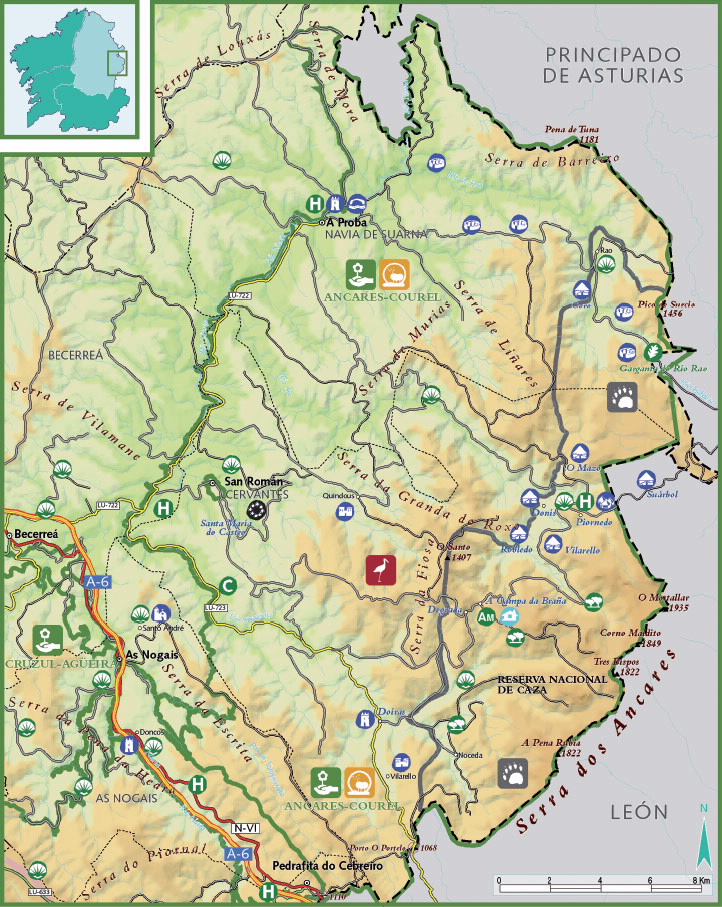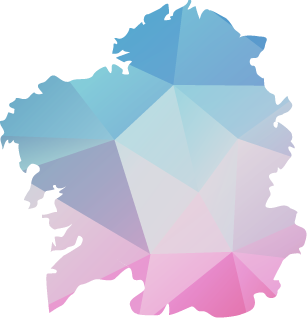Turismo de Galicia
-
Things to do
Way of St. James
Nature
Culture and heritage
Beaches and coast
Tourist trails
- Top ten: Ten unrivalled destinations
- The route of the camellia
- Tourist routes
- Pathways for discovering a country
- Walks to fall in love with
- Greenways
- Scenery at the wheel
- EuroVelo Galicia
- Beyond the Sunset
Gastronomy
Health tourism
PROMOTIONS TO ENJOY NOW
Cultural agenda
Will happen... View all
- Places to visit
-
Plan your trip
-
A miña viaxe
A MIÑA VIAXE
- Compartir
- Correo
- Imprimir
mailto:?subject=Content from Tourism of Galicia: OS ANCARES&body=I recommend you read the information OS ANCARES extracted from the Tourism of Galicia site on page https://www.turismo.gal/recurso/-/detalle/16957/os-ancares?langId=en_US%26tp=1%26ctre=9
Datos do recursos turístico
Description
Ancares is the original name of the river which has given its voice to the magical mountains between Galicia and León. It exerts its magnetism from afar, pinned to horizons at about two thousand metres. One enters them, with admiration and respect, along roads that go towards the peaks, anchored to deep, narrow valleys.
In the highest villages we discover the pallozas, ancient circular constructions with pounded straw roofs. Their curved but majestic forms are inspired by the summits of the smooth and wild mountains.
The rivers that descend from the Galician side all flow into the river Navia, that completely encircles the protected space in the west, and takes the waters towards the Cantabrian Sea. A good example is the beautiful valley carved out by the river Ser or the gorges of the river Rao, in the municipality of Navia de Suarna. The Leon side, on the other hand, flows south, into the Sil Basin.
The declaration of Os Ancares as a biosphere reserve in Galicia and Castilla and León, involved their incorporation as units of the Gran Cantábrica, a whole sequence of natural spaces of great environmental value in the north of Spain. The brown bear, its most famous symbol, also uses this Lugo region as part of its territory.
Access
Situation
Area
Services
Food: Yes.
Without missing
The second route going south from Liber takes us to Degrada, either via the municipal capital of Cervantes in San Román, or via Doiras and its castle, impregnable because of the strength of its stone construction and its location on a hill above the river, and of difficult access. The privately owned castle is also famous in literature because of the legend of the womanhind, daughter of a poor man who was bewitched by a Moor (a recurring character in Galician popular mythology) and tragically.
The youth hostel of OS Ancares and the Interpretation Centre are in Degrada. From here starts the route on foot, of medium-high difficulty, which leads to the Campa de Tres Bispos (1,795 m). However, the most used route continues up the winding road to the village of O Piornedo. A visit to the pallozas is a must. These are ancient circular dwellings which were inhabited until the 20th century. Some are open to the public as museums of the past, well-guarded in the family memory of their owners.
Singular nature
Among the fauna a mention should be made of the emblematic species which are not found in other parts of Galicia, including the brown bear and the capercaillie, last seen here, in this region. Wild boar, roe deer, deer and rabbits abound.
Information and facilities
Further features
Map





